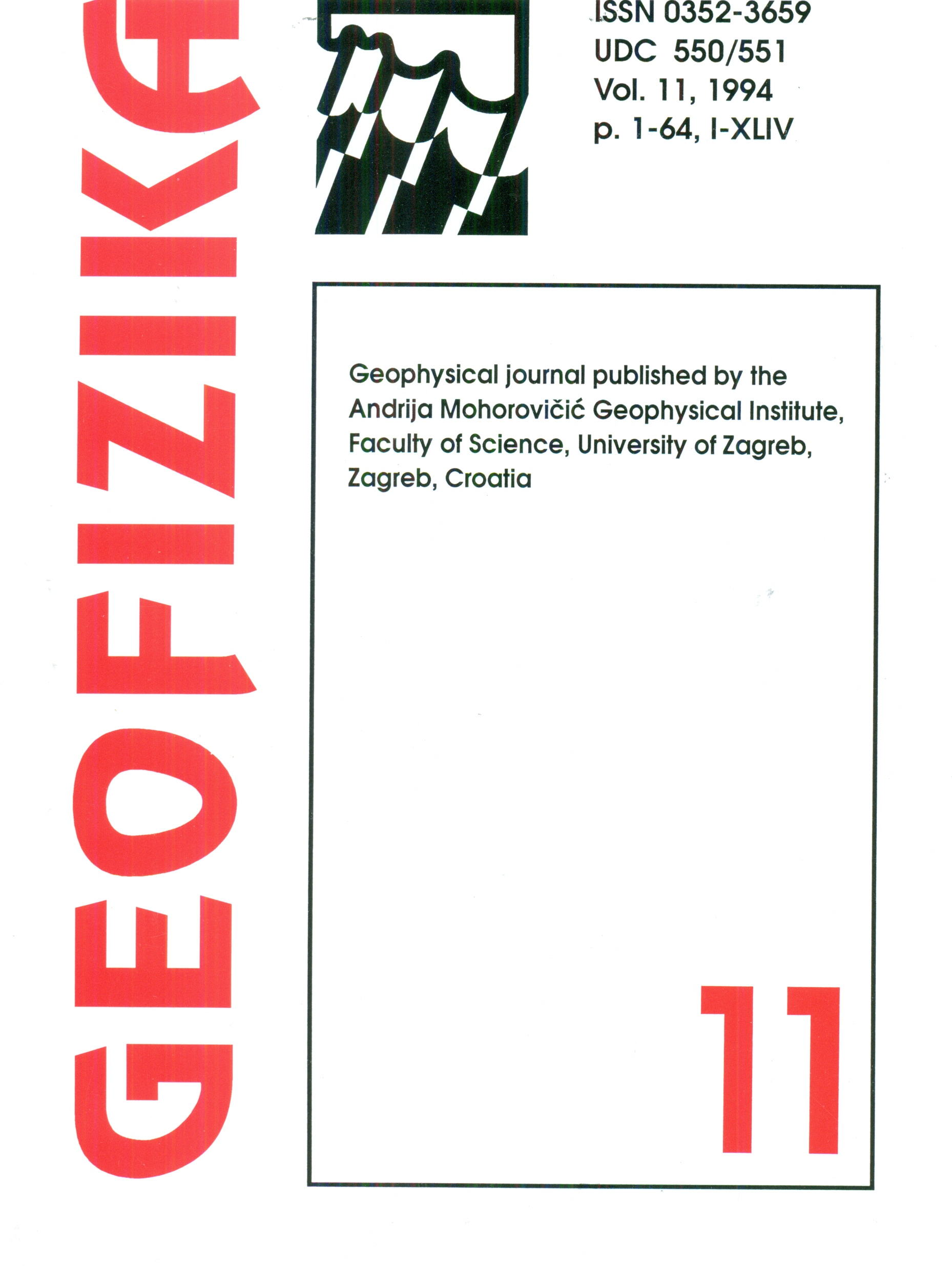Mesoscale characteristics of southern Adriatic bora storms
Abstract
The bora in Dalmatia is compared to the better known bora in the northern Adriatic. Fifteen severe storms in Split are selected during the period January 1980 to January 1983.
It is shown that in most cases such a severe bora does not last long, but the gusts are above 30 m s-1, with the absolute maximum of 45 m s-1, and therefore it is comparable with the strength of northern Adriatic bora. The mean surface pressure distribution and AT 500 hPa for these cases emphasize a mesoscale cyclone in the southern Adriatic, which may or may not be seen on large scale (synoptic) charts. Two “bora types” according to local weather characteristics are distinguished. “Dark bora” (cyclonic type) with cloudy sky and precipitation is characterized by deeper surface cyclone and a pronounced upper-level trough from Baltic to the southern Adriatic, in contrast to cloudiness (anticyclonic) “clear bora” when mesoscale cyclone is further to the east of Adriatic. The upper level flow in latter case shows a cut-off low with N-NE current above the bora throughout the troposphere. These patterns are in agreement with Defant’s (1951) description of cyclone and anticyclone bora types; they stress both upstream and downstream influence and emphasize the interaction of large-, meso- and local-scale processes on the Dalmatian bora flow.
The ALPEX bora case of 11-15 March 1982 illustrates local differences in bora occurrence and strength along the Adriatic, and the time cross sections exhibit the characteristics of upstream vertical atmospheric structure for bora onset and decay.
Downloads
Published
Issue
Section
License
Copyright (c) 2021 Geofizika journal

This work is licensed under a Creative Commons Attribution-NonCommercial 4.0 International License.

